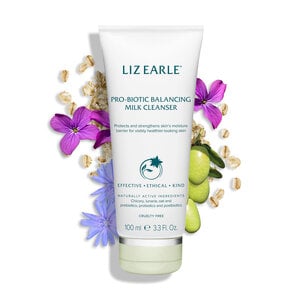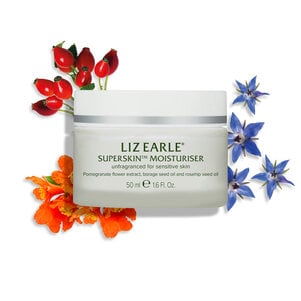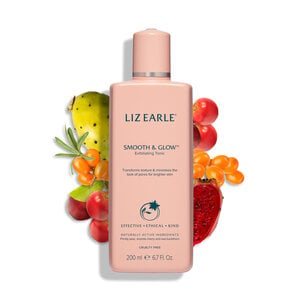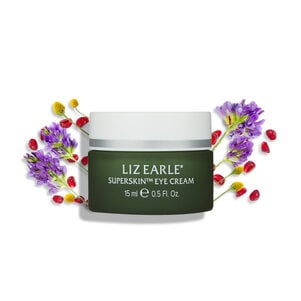
Tips to Identify Over Exfoliated Skin
April 19, 2024
4 min read
Exfoliation is a key step in any healthy skincare routine, helping to remove dead skin cells (which cause dull-looking skin) and promote radiant complexions. However, just as too little exfoliation can be detrimental, overdoing it can also lead to unwanted effects. The signs of over-exfoliated skin aren’t always clear, but once recognised, this common skincare concern can be easily rectified.
Signs you have over exfoliated skin
Over-exfoliation can lead to various signs of skin distress, including feelings of heightened sensitivity, the appearance of redness caused by dryness. These visible signs usually occur because the skin’s essential oils have been stripped away, compromising the natural protective barrier. Over-exfoliated skin can also present as dry and flaky, which usually indicates the need for hydrating products help restore balance.
Ironically, excessive exfoliation can also trigger breakouts and acne, as the skin reacts by increasing oil production, which can clog pores. Furthermore, over-exfoliated skin becomes more vulnerable to sun damage, as it lacks the protective barrier against harmful UV rays, necessitating heightened sun protection. Persistent irritation or burning sensations can also indicate an aggressive exfoliation routine – if this is the case, a gentler routine should be pursued to support and help the skin recover. Key signs include heightened sensitivity, causing tender or stinging sensations when applying products and visible redness and warmth to the skin. You may also be experiencing dryness and flakiness which can cause tightness and parched skin due to a compromised moisture barrier. Breakouts and acne can also be a sign you may have over exfoliated skin as an increase in oil production can clog pores.
What to do if you have over exfoliated skin?
If you suspect your skin is over-exfoliated, the first step (surprisingly) is to stop exfoliating immediately and allow your skin time to recover. This can be done by simplifying your skincare routine. For example, focusing on gentler cleansers, like our ultra-gentle, Pro-Biotic Balancing Milk Cleanser for sensitive skin which helps protect and strengthen the skin’s moisture barrier for visibly healthier-looking skin. With Liz Earle’s unique blend of nutrient-rich pre, pro and postbiotics, this kind-to-the-skin formula effectively cleanses without stripping skin’s goodness, leaving even the most dry, sensitive, and reactive-feeling skin looking calmer, clearer and healthier. Alternatively, a more gentle hydrating product can be key.Our intensely nourishing Superskin™ Moisturiser unfragranced, for sensitive skin, helps reduce the appearance of fine lines and wrinkles to leave skin feeling plumper and smoother. The luxurious botanical blend, packed with powerful plant ingredients, delivers up to 72 hours of hydration and is enriched with firming pomegranate flower extract and a trio of pure plant oils including cranberry, rosehip and British borage seed to help lock in moisture.
Gentle moisturisers like this help the skin get back to normal, which in time will allow you to reintroduce exfoliation gradually. Remember to choose milder formulations and reduce the frequency you use it.


How to exfoliate around the eyes?
Exfoliating around the eyes is a skincare practice that involves removing dead skin cells and promoting cell turnover in the delicate area surrounding the eyes. Whether you’re looking for an under eye exfoliant or all-over face exfoliant, it's important to approach this sensitive eye area with care.Choose a gentle exfoliant: Specifically formulated for the delicate eye area, look for products with fine particles or chemical exfoliants like alpha hydroxy acids (AHAs) or beta hydroxy acids (BHAs), which are milder and less likely to cause irritation.
Reveal ultra-smooth, glowing skin in 30 seconds. Smooth & Glow™ Exfoliating Tonic leaves skin feeling resurfaced, without irritation. Gentle enough to use both day and night, our multi-benefit toner evens the appearance of skin tone, helps support surface cell turnover and hydrates to leave your complexion looking energised. Powered by ingredients expertly selected for their efficacy, including prickly pear (nature’s powerful brightening exfoliant), acerola cherry (bursting with fast-acting, brightening vitamin C) and sea buckthorn.
Use Light Pressure: Apply the exfoliant using gentle, circular motions with your ring finger or a soft cotton pad. Avoid pulling or stretching the skin around the eyes, as it's delicate and prone to damage.
Be mindful of ingredients: Avoid harsh scrubs or exfoliants containing large, abrasive particles, as they can cause micro-tears in the skin. Instead, look for products with gentle exfoliating agents that won't irritate the sensitive eye area. Limit frequency: Due to the delicate nature of the skin around the eyes, it's essential to exfoliate sparingly. Aim to exfoliate this area no more than 1-2 times per week to avoid over-exfoliation and potential irritation.
Follow with a moisturiser: After exfoliating, apply a hydrating eye cream or moisturiser to replenish moisture and soothe the skin. Look for products containing ingredients like hyaluronic acid or ceramides to help lock in hydration.
With a silky smooth texture that absorbs fast to instantly hydrate, Superskin™ Eye Cream is enriched with plant extracts expertly selected for their efficacy, including firming paracress flower extract, antioxidant pomegranate fruit and green tea to brighten, plus alfalfa to ease under-eye puffiness. It also contains a signature trio of nourishing plant oils – cranberry, rosehip and British borage seed – to provide specialist care for the delicate eye area.
How often should you exfoliate?
Exfoliation is a key step in any routine to achieve vibrant, glowing and healthy-looking skin, but moderation is key. Being in the know to the signs of over-exfoliated skin allows you to tailor your skincare regime and help maintain a balanced complexion that works for you.






